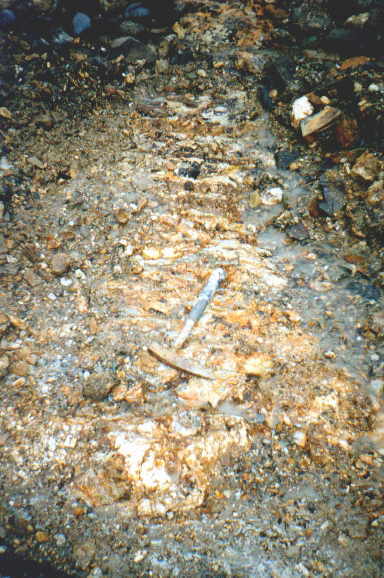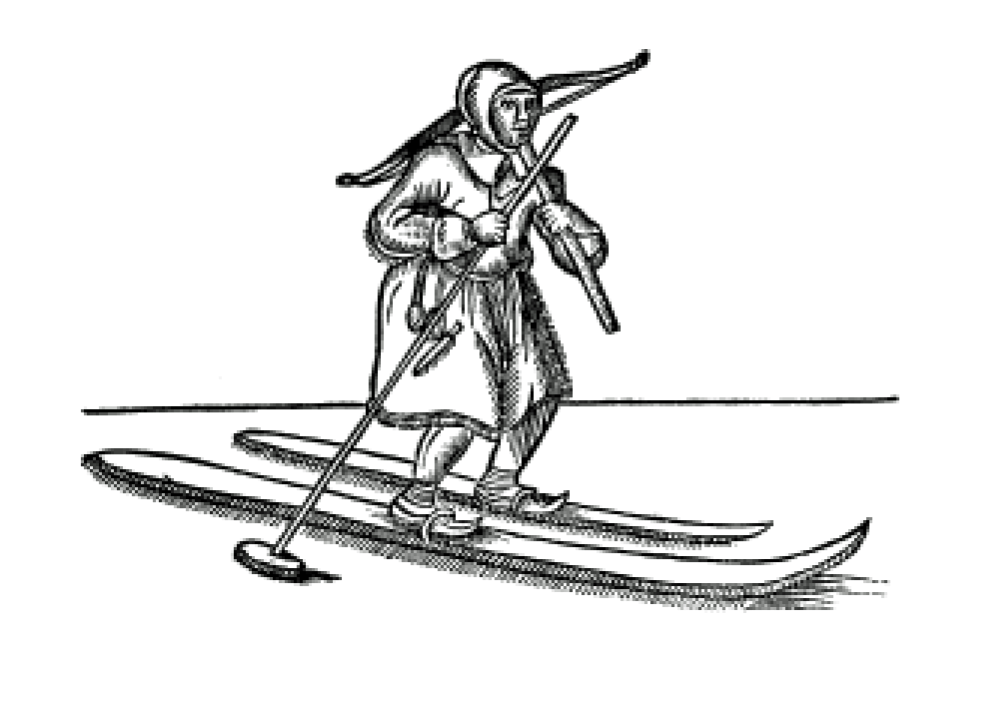|
Hybe, Liptovský Mikuláš District
Hybe ( Hungarian: ''Hibbe'') is a village and municipality in the Liptovský Mikuláš District in the Žilina Region of northern Slovakia. Names and etymology The name is of Slavic ( Slovak) origin with uncertain etymology. Possibly, it derives from the stem ''-gyb''/''-hyb''. Proto-Slavic ''gybij'', ''gybkij'', ''gybaja'', ''gybica'', Slovak ''hybký'' - unstable, flexible, the stem is present also in words like ''ohyb'' - bending, ''pohyb'' - movement, etc. The name may refer to the character of the river Hybica. The name was adopted by the Germans before the lenition of Slavic /g/ to /h/ in Slovak ( 1200) - ''Geib''. History The village of Hybe was first mentioned in historical records in 1239 (''villa Hyba''). The village was founded around the end of the 12th century, as a Slovak settlement. In 1230 the village was owned by Hauk, Polk and Beuch from Uhorská Ves. In 1239, King Béla IV of Hungary took possession and associated it with the royal property. In 1396, Hybe giv ... [...More Info...] [...Related Items...] OR: [Wikipedia] [Google] [Baidu] |
Western Tatras
The Western Tatras (; ) are mountains in the Tatras, part of the Carpathian Mountains, located on the Polish- Slovak border. The mountains border the High Tatras in the east, Podtatranská kotlina in the south, Choč Mountains in the west and Rów Podtatrzański in the north. The main ridge is 37 kilometers long and the mountain range contains 31 two-thousanders. Western Tatras are the second highest mountain range both in Poland and Slovakia; its highest peak is Bystrá at 2,248 meters. Other notable mountains include Jakubiná (2,194 m), Baranec (2,184 m), Baníkov (2,178 m), Tri kopy (2,136.3 m), Plačlivé (2,125.1 m), Ostrý Roháč (2,087.5 m), Volovec (Polish: ''Wołowiec''; 2,064 m), Kasprowy Wierch (Slovak: ''Kasprov vrch''; 1,987 m) and Giewont (1,894 m). They are partially located in the traditional regions of Liptov Liptov () is a historical and geographical region in central Slovakia with around 140,000 inhabitants. The area is also known by ... [...More Info...] [...Related Items...] OR: [Wikipedia] [Google] [Baidu] |
Lode
In geology, a lode is a deposit of metalliferous ore that fills or is embedded in a fracture (or crack) in a rock formation or a vein of ore that is deposited or embedded between layers of rock. The current meaning (ore vein) dates from the 17th century, being an expansion of an earlier sense of a "channel, watercourse" in Late Middle English, which in turn is from the 11th-century meaning of ''lode'' as a "course, way". The generally accepted hydrothermal model of lode deposition posits that metals dissolved in hydrothermal solutions (hot spring fluids) deposit the gold or other metallic minerals inside the fissures in the pre-existing rocks. Lode deposits are distinguished primarily from placer deposits, where the ore has been eroded out from its original depositional environment and redeposited by sedimentation. A third process for ore deposition is as an evaporite. A stringer lode is one in which the rock is so permeated by small veinlets that rather than mining th ... [...More Info...] [...Related Items...] OR: [Wikipedia] [Google] [Baidu] |
Nižná Boca
Nižná Boca () is a village and municipality in Liptovský Mikuláš District in the Žilina Region of northern Slovakia. History In historical records the village was first mentioned in 1285. Nižná Boca Village is situated on both banks of the river Boca. It is surrounded by nearby mountains. The area is situated in a protected area in the Low Tatras National Park. Near the village are meadows and small rolls. The soil is poor. Potatoes are often harvested as much as inflicted. Under difficult circumstances, planted crops grown are exposed to severe weather conditions. The population was addressed mainly to cattle and sheep. A special feature is a rarity, even the fact that citizens have cattle for short time next to their homes, as well as directly on grassland in special loghouses - meadow stables. About 50 of these meadow stables can be seen scattered throughout the valley. Some are still functional and in good condition. Efforts is currently underway to rescue the stab ... [...More Info...] [...Related Items...] OR: [Wikipedia] [Google] [Baidu] |
Vyšná Boca
Vyšná Boca () is a village and municipality in Liptovský Mikuláš District in the Žilina Region of northern Slovakia. History In historical records the village was first mentioned in 1262. Before the establishment of independent Czechoslovakia in 1918, it was part of Liptó County within the Kingdom of Hungary. From 1939 to 1945, it was part of the Slovak Republic. Geography The municipality lies at an altitude of 953 metres and covers an area of 20.591 km2. It has a population Population is a set of humans or other organisms in a given region or area. Governments conduct a census to quantify the resident population size within a given jurisdiction. The term is also applied to non-human animals, microorganisms, and pl ... of about 102 people. References Villages and municipalities in Liptovský Mikuláš District Liptov {{Žilina-geo-stub ... [...More Info...] [...Related Items...] OR: [Wikipedia] [Google] [Baidu] |
Tourism
Tourism is travel for pleasure, and the Commerce, commercial activity of providing and supporting such travel. World Tourism Organization, UN Tourism defines tourism more generally, in terms which go "beyond the common perception of tourism as being limited to holiday activity only", as people "travelling to and staying in places outside their usual environment for not more than one consecutive year for leisure and not less than 24 hours, business and other purposes". Tourism can be Domestic tourism, domestic (within the traveller's own country) or International tourism, international. International tourism has both incoming and outgoing implications on a country's balance of payments. Between the second half of 2008 and the end of 2009, tourism numbers declined due to a severe Economy, economic slowdown (see Great Recession) and the outbreak of the 2009 2009 flu pandemic, H1N1 influenza virus. These numbers, however, recovered until the COVID-19 pandemic put an abrupt end to th ... [...More Info...] [...Related Items...] OR: [Wikipedia] [Google] [Baidu] |
Cross-country Skiing
Cross-country skiing is a form of skiing whereby skiers traverse snow-covered terrain without use of ski lifts or other assistance. Cross-country skiing is widely practiced as a sport and recreational activity; however, some still use it as a means of travel. Variants of cross-country skiing are adapted to a range of terrain which spans unimproved, sometimes mountainous terrain to groomed courses that are specifically designed for the sport. Modern cross-country skiing is similar to the original form of skiing, from which all skiing disciplines evolved, including alpine skiing, ski jumping and Telemark skiing. Skiers propel themselves either by striding forward (classic style) or side-to-side in a skating motion (skate skiing), aided by arms pushing on ski poles against the snow. It is practised in regions with snow-covered landscapes, including Europe, Canada, Russia, the United States, Australia and New Zealand. Cross-country skiing (sport), Competitive cross-country skiing i ... [...More Info...] [...Related Items...] OR: [Wikipedia] [Google] [Baidu] |
Slovak Republic
Slovakia, officially the Slovak Republic, is a landlocked country in Central Europe. It is bordered by Poland to the north, Ukraine to the east, Hungary to the south, Austria to the west, and the Czech Republic to the northwest. Slovakia's mostly mountainous territory spans about , hosting a population exceeding 5.4 million. The capital and largest city is Bratislava, while the second largest city is Košice. The Slavs arrived in the territory of the present-day Slovakia in the 5th and 6th centuries. From the late 6th century, parts of modern Slovakia were incorporated into the Avar Khaghanate. In the 7th century, the Slavs played a significant role in the creation of Samo's Empire. When the Avar Khaghanate dissolved in the 9th century, the Slavs established the Principality of Nitra before it was annexed by the Principality of Moravia, which later became Great Moravia. When Great Moravia fell in the 10th century, the territory was integrated into the Principality of Hu ... [...More Info...] [...Related Items...] OR: [Wikipedia] [Google] [Baidu] |
Roman Catholic
The Catholic Church (), also known as the Roman Catholic Church, is the largest Christian church, with 1.27 to 1.41 billion baptized Catholics worldwide as of 2025. It is among the world's oldest and largest international institutions and has played a prominent role in the history and development of Western civilization. O'Collins, p. v (preface). The church consists of 24 ''sui iuris'' (autonomous) churches, including the Latin Church and 23 Eastern Catholic Churches, which comprise almost 3,500 dioceses and eparchies around the world, each overseen by one or more bishops. The pope, who is the bishop of Rome, is the chief pastor of the church. The core beliefs of Catholicism are found in the Nicene Creed. The Catholic Church teaches that it is the one, holy, catholic and apostolic church founded by Jesus Christ in his Great Commission, that its bishops are the successors of Christ's apostles, and that the pope is the successor of Saint Peter, upo ... [...More Info...] [...Related Items...] OR: [Wikipedia] [Google] [Baidu] |
Evangelic
Evangelicalism (), also called evangelical Christianity or evangelical Protestantism, is a worldwide, interdenominational movement within Protestant Christianity that emphasizes evangelism, or the preaching and spreading of the Christian gospel. The term evangelical is derived from the Koine Greek word ''euangelion'', meaning “good news,” in reference to the message of salvation through Jesus Christ. Evangelicalism typically places a strong emphasis on personal conversion, often described as being “ born again,” and regards the Bible as the ultimate authority in matters of faith and practice. The definition and scope of evangelicalism are subjects of debate among theologians and scholars. Some critics argue that the term encompasses a wide and diverse range of beliefs and practices, making it difficult to define as a coherent or unified movement. The theological roots of evangelicalism can be traced to the Protestant Reformation in 16th-century Europe, particu ... [...More Info...] [...Related Items...] OR: [Wikipedia] [Google] [Baidu] |




